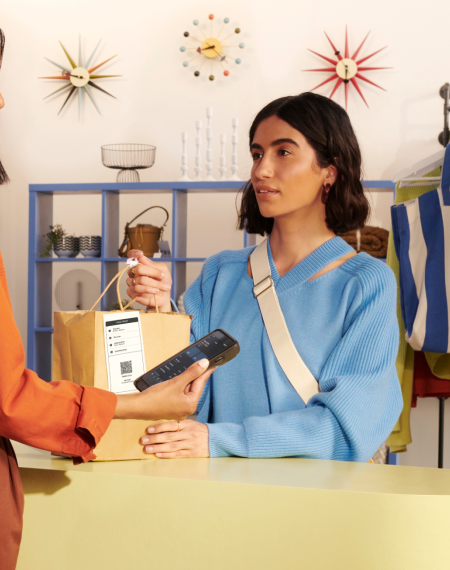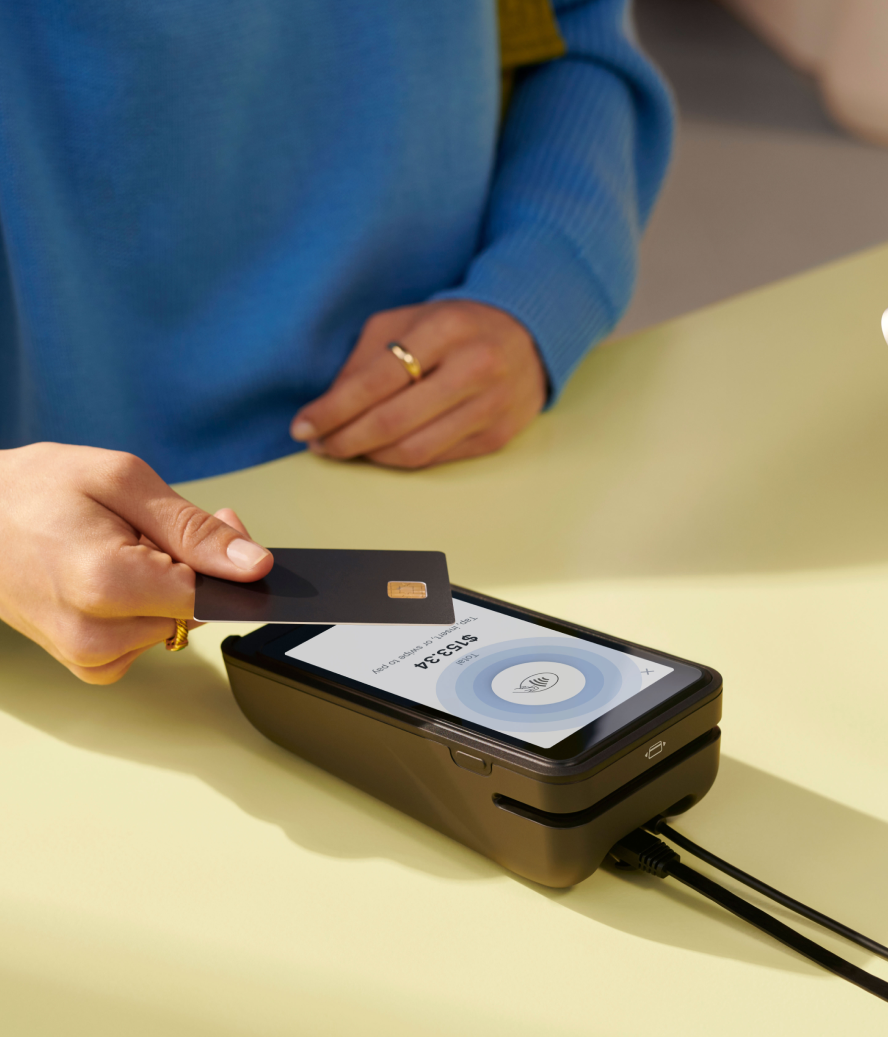Brand licensing happens when a company grants permission for other businesses to commercially use their intellectual property—be that their brand name, software, or patent—in return for royalties.
The brand licensing industry is big business with an estimated valuation of $533.9 billion by 2033. The model opens the door to product expansions, protection against counterfeit products, and even stronger customer relationships. But you’ll need to understand the ins and outs of licensing before you pursue this as a way to grow your retail business.
In this guide, explore the types of brand licensing deals you can broker, the benefit of licensing your intellectual property, and examples of brands that have successfully licensed their products.
What is brand licensing?
Brand licensing is the act of giving permission to another company to use your business’s intellectual property (IP)—such as patents, software, or characters—in exchange for a fee.
How brand licensing works
Licensing works when brand owners lease the rights to use their intellectual property to another retailer. Licensees can resell the IP at a higher price or manufacture merchandise with the IP on it. Either way, the brand owner gets a kickback—as a percentage commission or a one-time royalty fee—as a thanks for granting permission.
Types of brand licensing deals
Brands and trademarks
Companies can give licenses for other brands to use their trademarks, such as their brand name or logo.
Take Coca-Cola, for example. Independent brands that manufacture the fizzy drink on behalf of Coca-Cola can do so because they have a trademark license. These retail partnerships drive upward of $1 billion in retail sales for the brand.
Patent licensing
A patent is similar to a trademark in the fact that its intellectual property is legally protected from unauthorized commercial use. The only difference is that patents are given to new inventions—such as machinery, design (consumer product), or plant inventions—instead of brand names or logos.
One example is Lollacup. Anyone who wants to use its weighted children’s sippy cup needs a patent license from the brand.
Character, entertainment, and art
You’ll find Mickey Mouse, Marvel, and Star Wars characters on merchandise all over the world—not just official Disney merchandise. Third-party brands get a license to use Disney’s characters on their clothes, home décor, and mugs.
These trademarks pass over into entertainment. Disney also licenses its movies, TV shows, and music. Even footage of its theme parks can only be used by those with a brand license.
Software licensing
If you’re paying to use software, you’re buying a single-user or team license. You’re not allowed to sell access to the software to anyone else—unless you have a multi-user license. This allows third-party companies to resell a software company’s code to other people.
Sports licensing
Sports teams in the NBA, NFL, and European soccer leagues all broker brand licensing deals. Each agreement allows third-party companies to produce merchandise with the team’s logo or player name.
Benefits of brand licensing in retail
Increase brand exposure
Whether you’re the licensor or the licensee, both brands lend each other their audiences to grow and expand into a new age demographic, geographic location—you name it. Market penetration is easier when you’re working with licensees who are already established there.
Expand your product line without scaling production
No matter the size of your company, it can be hard to grow a product lineup in a meaningful way that keeps pace with customer expectations.
Well-established businesses have access to finance, expertise, and experience in an already established market. On the other hand, as a startup company, you’ll need to either seek outside funding or put your own money into product development. This can take a lot of time and money, and it can also be dangerous.
Licensing your brand is one way to build bridges between your manufacturing and product design capabilities. Collaborating with an established, more profitable corporation will open the door to manufacture in larger quantities and advertise your product to a much larger audience—something smaller, independent businesses can’t do so easily.
Generate incremental revenue and diversify income streams
With a brand licensing agreement, and as the licensor, you’ll typically receive royalties for every licensed product sold.
Royalties aren’t typically going to take your business from $1,000 in revenue to $1 million, but they can be a good way to add incremental value and diversify the ways your brand can make money.
Depending on the licensed merchandise, that incremental revenue can even help to smooth out seasonal swings in your retail store.
Protect your brand against counterfeit products
When a brand grows significantly, counterfeiters often follow closely behind. Licensing your brand can help you stay ahead of this curve.
One of the first stages of the brand licensing process is to protect your intellectual property. It also protects your brand’s prestige with explicit terms around discounting and similar issues. This proactiveness means your brand has a leg to stand on when battling counterfeit products.
How to license your brand
An effective brand licensing strategy ensures that your brand’s assets are safe and protected, and that any licenses you hand out will ultimately benefit your brand. Here’s how to get started.
1. Protect your intellectual property
The last thing you want is to accidentally give someone full, unfettered access to your brand assets without getting anything in return.
Protect your brand by working directly with a lawyer who specializes in intellectual property—and get started early. Ensure your brand’s assets are trademarked and protected from the very outset. Then, you can think about licensing them down the line.
2. Do your research
Create an overarching strategy that outlines what you’re looking for in a potential licensee. That way, you can make a quick decision about which companies to approach and approve.
Like any partnership, you’ll evaluate potential licensees to ensure they’re a good fit for licensing your brand. There are a ton of factors that go into brand fit, but let’s boil it down to a few questions you should consider:
- Are your customers interested in this product? If customers frequently ask if you offer a product (and you don’t), that’s a good opportunity to offer someone else a license to produce that product under your brand name.
- Does your brand’s equity translate to this product? Sports teams license their logos and names to apparel companies because fans snap up Red Sox hats like there’s no tomorrow. That fits. It wouldn’t make quite as much sense for Tampax to license their brand to a company that makes breakfast cereal.
- Does the licensee have the operational capacity to add value? You gain the most from brand licensing agreements when the licensed products sell (a lot.) For any potential licensee, ask yourself: Can they produce enough of the licensed product to make the agreement lucrative?
3. Draft a licensing agreement
A brand licensing agreement accounts for every detail involved in how two companies will work together. For example, the licensee (the company buying rights to license a brand) often pays a portion of each sale of the licensed product back to the licensor (the brand being licensed).
Nobody knows the nuts and bolts of a watertight agreement like a brand licensing lawyer. Do a Google search to find lawyers experienced with your type of intellectual property—such as patent or software law—as well as your industry.
It’ll take some time to find a lawyer who will make your brand licensing deal fair for everyone involved, but it’s the most important part of the process (after securing your IP).
Components of a brand licensing agreement
As your brand licensing agent draws up the license, there are several terms and restrictions you’ll decide on. These lay out the specifics of the partnership and set expectations for both you and the licensee.
Definition of IP being licensed
Your brand licensing agreement should clearly define what is (and isn’t) included as part of the agreement.
Sanshee is a retail business that manufactures premium merchandise for video game and anime fans. According to Sarah Fetter, the operating manager who brokers Sanshee’s brand licensing deals, “[You need to specify] licensor deliverables; things like, ‘We agree to promote the item you’ve created for us within X amount of time.’ All of that spelled out in advance is such an amazing thing to have.
“And then, having a full suite of just all of the assets that I could ever hope for, whether it’s a copy of the game or backgrounds on the characters if it’s not out already; any of the artistic stuff or character items. Basically, any of that stuff we need to know [should be] there on the day we sign the license.”
Exclusivity
The majority of brand licensing agreements are non-exclusive. That means you can license your brand to as many competing apparel manufacturers as you choose. Even though non-exclusivity is the norm in brand licensing, it still needs to be outlined in the contract.
In some cases, you may choose to offer a small number of exclusive licenses. Fewer licensees exclusively using your intellectual property gives them a competitive advantage—in which case, you can typically command higher royalties.
Royalties
Licensees make money off the back of your intellectual property. So, in your brand licensing agreement, go into extensive detail on the structure of your financial compensation for licensing your business’s IP.
Some common payment structures for brand licensing deals are:
- Initial flat fee. Licensees pay an upfront, flat fee to license your IP. This is typically on a yearly basis.
- Ongoing royalties. Licensees will pay a set percentage of unit price or specific dollar amount for each licensed product sold. If you’re claiming a 10% royalty on licensed products and your licensee sells $500,000 worth, your cheque would be $50,000.
Some brands also choose to include retail sales monitoring as part of their agreement. In this case, the licensor can request sales data from the licensee to check whether the partnership makes commercial sense to continue.
Conversations around discounting licensed products may also arise throughout this process, especially using the royalty payment structure. In your licensing agreement, clearly state the maximum discount your licensees can offer to their customers. After all, a 10% royalty from a $50 full-price licensed product is dramatically different from a $20 discounted one.
Quality insurance
When you give another company permission to use your name, logo, or likeness on their products, you’re taking a calculated risk.
Your brand is automatically associated with—and to some extent, held accountable for—the quality and content of those products. That’s why it’s vital to include quality assurance terms in your licensing agreement. Your brand identity and reputation are at stake.
Quality assurances might include restrictions for the licensee around:
- Distort images (like your brand logo)
- Changing your brand fonts or colors
- Adding new code to the licensed software
To protect your brand image, in your agreement, clearly define what’s being licensed (i.e., a video game character) and any restrictions on how a licensee can use it. For example: “Licensee cannot use our IP to manufacture or sell alcohol-related products.”
Timeframes
There’s no ideal duration for a licensing agreement. A year is a good starting point, but certain brands like long-term partnerships, so they have more time to sell their licensed inventory. Others dipping their toe into the licensing waters might opt for short-term deals to see whether it’s a business model that works for them.
The length doesn’t matter so much. What matters is that you include your agreed timeframe in your brand licensing contract.
Geographic regions
If you’re working with several licensing partners, clearly define the regions in which they’re allowed to use your IP. It’ll prevent them from competing with one another and causing arguments.
If you’re outside of the US, you generally can’t sell items in the countries where the IP is held. So, if a person in England is making a game and you sign a contract with them, you likely aren’t going to be able to sell in that country, because they already have somebody who’s doing it locally.
Shipping responsibilities
Who will be responsible for picking, packing, and shipping an item to a customer? Where will the inventory be held: at your warehouse, the licensee’s, or a third-party logistics (3PL) partner’s distribution center?
Ideal terms look like this: “We are going to send you X amount of items to send to Y location.” When you get into importing and specifications and requirements it becomes really complicated, especially when you’re trying to manage fulfilment.
Termination clause
Every contract must have a termination clause that explains:
- When the licensing agreement ends
- How either party can end the contract prematurely
- The notice required to do so
You should also explain whether the brand licensing deal auto-renews after time is up—and if so, at what price. If you’re entering into a two-year contract with a licensee, for example, you may have a clause stating that if the deal is automatically renewed, your royalty fee increases from 10% to 12% of all licensed product sales.
Brand licensing examples
The Walt Disney Company
Disney doesn’t manufacture every t-shirt or coffee mug with its characters on it. Since the empire signed its first licensing agreement back in 1933, thousands of other businesses have had deals with Disney for the right to use its characters, series names, music, and other trademarks. Those businesses handle details like producing and manufacturing those products.
These licensing deals are why Disney seems to be everywhere. It’s the top licensor in the world, with licensees and DTC sales netting the company $63 billion in 2024.
Shopify merchant A Birthday Place tapped into this brand licensing opportunity with a line of Frozen-branded party goods. Similarly, Sun-Staches, which also sells wholesale to retail stores, has its own Frozen-licensed product.
Netflix
Netflix is the biggest streaming platform in the world. Almost 90 million customers pay for access to its on-demand library of content. And with its own series and movies, Netflix has amassed dedicated fan bases around several of its “sub brands” or programs.
Shopify merchant Fugitive Toys, for example, has several licensed products for sale on its website and in its California stores. Among them are Stranger Things figurines.
Sweets & Geeks
Sweets & Geeks sells pop culture-inspired candy, apparel, games, and novelties. It leverages several brand licenses to be able to tap into current trends and spark interest in its products.
The brand licenses are diverse, including AirHeads, NFL teams, the Beatles, Settlers of Catan, and more. This allows Sweets & Geeks to create a range of timely, trending products for shoppers.
Leverage brand licensing for your store
You don’t have to have a character as famous as Mickey Mouse to get involved with brand licensing. Sharing intellectual property for commercial use is a possibility for any brand—either as the licensee or the licensor.
Use these tips to make sure your licensing agreement is watertight. Define the financial kickbacks and quality assurance processes, and have restrictions on how a licensee can use your IP—especially considering your brand identity will be merged with theirs.
It might sound like a lot to work through, but a brand licensing attorney will make sure your agreement is watertight.
Read more
- What Is a POS System and Why Do Retailers Need One?
- How to Make Your Product Copy More Persuasive
- Trimming the Fat: How Streamlining Your Brand Experience Can Lead to More Sales
- What is Visual Search: How Retailers Can Use it to Enhance the Customer Experience
- 24 Retail Blogs Every Small Business Entrepreneur Should Be Reading
- The 8 Best Podcasts for On-the-Go Retail Entrepreneurs
- Product Branding: How to Give Products an Identity
- 5 Lessons Traditional Retailers Can Learn From DTC Brands
- What Retailers Can Learn From The Museum Of Ice Cream’s Sweet Success
- What Retailers Need to Know About Voice Shopping
Brand licensing FAQ
What is retail licensing?
Retail licensing lets retailers use another brand’s intellectual property to sell products. In some cases, it doesn’t require a new manufacturing process—the licensor can lean on the licensee’s existing processes to resell trademarked or patented products.
What is an example of a brand license?
One real-world example of a brand licensing deal is Barbie. The global brand is known all over the world and has licensing deals with all kinds of businesses, retailers included. One such retailer is Shopify merchant The Oodie, which sells limited edition Barbie products.
What are the benefits of brand licensing?
Brand licensing lets retailers expand their customer base and lean on an existing brand’s recognition, without investing too much money in manufacturing.
What is the difference between owned and licensed brands?
Owned brands sell products that contain their own intellectual property or unique designs. A licensed brand, however, uses the IP of another retailer—such as their trademarked character or logo—to sell products.





